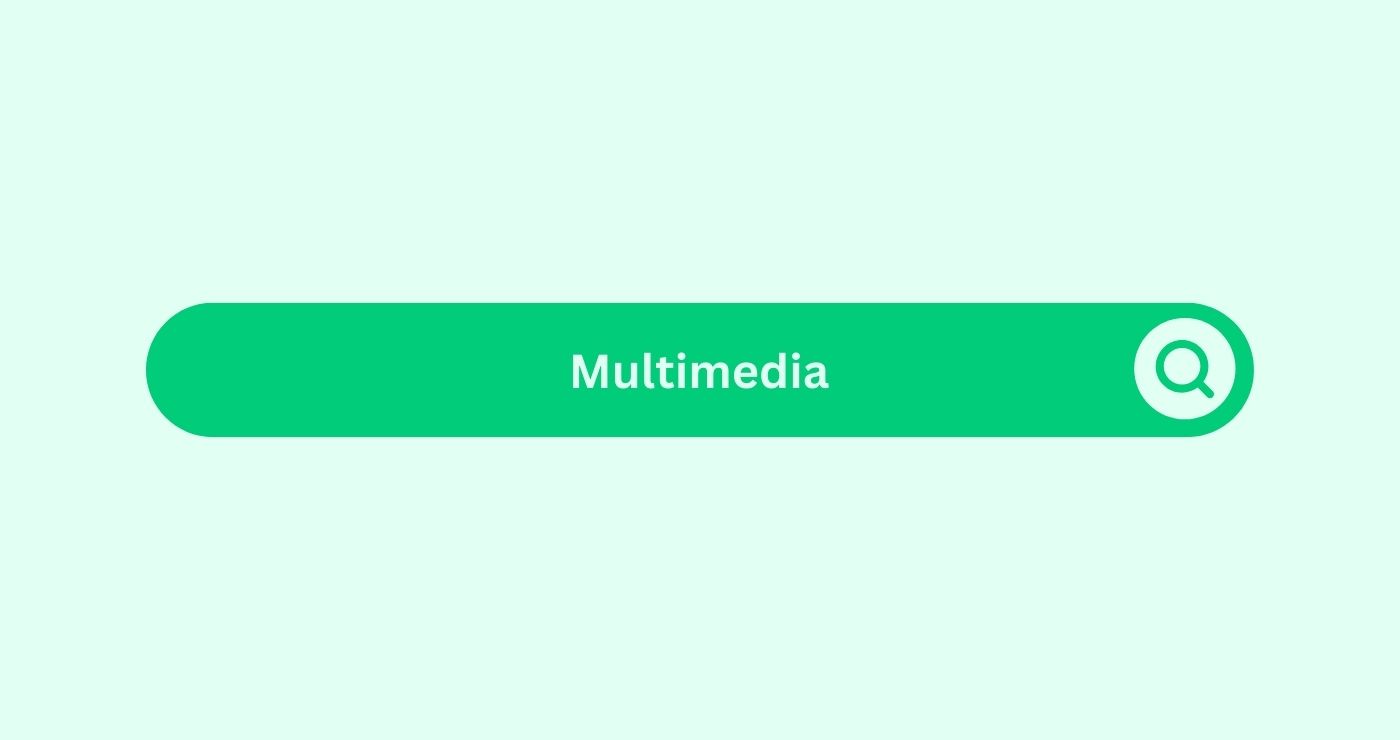Definition
Multimedia refers to the use of various content forms such as text, audio, images, animations, video, and interactive contentDefinition Interactive Content refers to digital content for... to create a richer and more engaging user experience. In the digital world, multimedia combines these different formatsDefinition In the SEO space, "formats" refer to the various ... to convey information effectively and interactively. This integrated approach improves how we present information, making it more appealing and easier for users to understand.
From an SEO perspective, multimedia content is crucial for improving user engagementDefinition Engagement in content marketing refers to the deg..., which in turn can boost search engine rankings. Search engines like Google prioritize content that keeps users on the site longer and encourages interaction. By incorporating multimedia elements like videos, infographics, podcasts, and interactive graphics, websites can create a more immersive experience, which leads to users spending more time on the site, experiencing lower bounce rates, and increasing the likelihood of sharing content on social mediaWhat is Social Media? Social media refers to online platform... platforms.
Multimedia content also helps in diversifying trafficDefinition In the context of SEO (Search Engine Optimisation... sources and can leadDefinition A Lead in the context of SEO refers to a potentia... to better user retention. For example, videos hosted on platforms like YouTube can drive trafficDefinition In the context of SEO (Search Engine Optimisation... to your site, while infographics can be shared on visual-centric social mediaWhat is Social Media? Social media refers to online platform... platforms like Pinterest. Each multimedia type offers unique benefits and caters to different segments of your audienceDefinition The term "Audience" refers to the group of indivi..., broadening your reach and enhancing your overall SEO strategy.
How you can use
Example:
Consider an e-commerce company that wants to enhance its SEO strategy by incorporating multimedia content.
- Product Videos: The company creates detailed product videos showcasing the features and benefits of their products. These videos are embedded on product pages and shared on social mediaWhat is Social Media? Social media refers to online platform... platforms like YouTube and Instagram.
- Infographics: To explain complex information, such as the product manufacturing process or usage tips, the company designs eye-catching infographics. These infographics are shared on their blog, Pinterest, and other social mediaWhat is Social Media? Social media refers to online platform... channelsDefinition Channels in the context of SEO refer to the vario....
- Podcasts: The company starts a podcast series where they discuss industry trends, interview experts, and share behind-the-scenes stories. The podcasts are available on the company’s website and on major podcast platforms like Apple Podcasts and Spotify.
- Interactive ContentDefinition Interactive Content refers to digital content for...: The company integrates interactive elements such as quizzes and product customization tools on their website, providing an engaging and personalized experience for users.
- SEO Benefits: By incorporating these multimedia elements, the company notices an increase in average time spent on their website, a decrease in bounce rates, and a significant rise in social mediaWhat is Social Media? Social media refers to online platform... shares. The diverse content types also generate backlinksWhat are backlinks in the context of SEO? Backlinks, also kn... from different platforms, further boosting their SEO performance.
Calculations and Formulas:
To measure the impact of multimedia on your SEO strategy, consider tracking the following metricsWhat are Metrics in the context of SEO? Metrics in SEO refer...:
- Average Time on PageDefinition In the realm of SEO, time on page refers to the a...: Measure the average time users spend on pages with multimedia content.
Average Time on Page = Total Time Spent by Users / Number of Page Views
Average Time on Page = Number of Page Views / Total Time Spent by Users
- Bounce RateDefinition Bounce Rate in social media marketing refers to t...: Track the percentage of visitors who leave the site after viewing only one page with multimedia content.
Bounce Rate = (Single-Page Visits / Total Visits)×100
Bounce Rate = (Total Visits / Single-Page Visits)×100
- Social Shares: Monitor the number of times multimedia content is shared on social mediaWhat is Social Media? Social media refers to online platform... platforms.
Share Rate = (Total Shares / Total ImpressionsDefinition Impressions track campaign effectiveness for digi...)×100
Share Rate =(Total ImpressionsDefinition Impressions track campaign effectiveness for digi... / Total Shares)×100
Key Takeaways
- Enhanced EngagementDefinition Engagement in content marketing refers to the deg...: Multimedia content increases user interaction and time on site, boosting SEO performance.
- Diverse TrafficDefinition In the context of SEO (Search Engine Optimisation... Sources: Different multimedia formatsDefinition In the SEO space, "formats" refer to the various ... can attract trafficDefinition In the context of SEO (Search Engine Optimisation... from various platforms, enhancing reach.
- Improved User Experience: Rich, interactive contentDefinition Interactive Content refers to digital content for... provides a better user experience, reducing bounce rates.
- Increased Shareability: Multimedia content is more likely to be shared on social mediaWhat is Social Media? Social media refers to online platform..., increasing visibility and backlinksWhat are backlinks in the context of SEO? Backlinks, also kn....
- Better Retention: Engaging multimedia content helps in retaining users and encouraging repeat visits.




